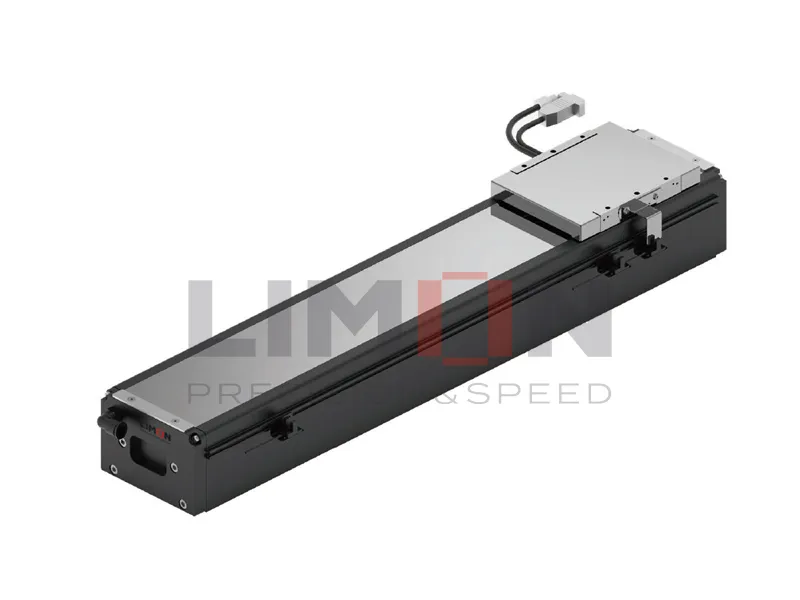Inaccurate motion systems cause failures, costly downtime, and poor product quality. Proper linear guide selection ensures smooth, precise, and reliable operation across critical industrial tasks.
Linear guides are mechanical components that enable smooth, accurate linear motion in machines and equipment. Their proper design and selection are key to performance, reliability, and service life.
Learn how linear guides work and how to choose the right type.
What Is a Linear Guide
Linear guides are mechanical systems designed to provide linear motion with high accuracy and minimal friction. Unlike traditional sliding methods, linear guides use rolling elements such as balls or rollers to move along rails, which minimizes wear and energy loss.
Typically, a linear guide consists of a guide rail and a block (also called a slider or carriage). The block contains recirculating ball or roller bearings that ensure smooth motion along the rail. These components are critical in industries that require precise movement, including CNC machines, semiconductor processing, medical imaging, and packaging machinery.

Terminology and Difference from Rotary Bearings
Understanding linear guide terminology helps avoid miscommunication during specification or installation:
Rail: The track on which the slider moves.
Block (Slider/Carriage): The moving part that houses the rolling elements.
Preload: The internal load applied to the guideway to eliminate play.
Dynamic Load Rating: The load that the guide can endure for a specified life cycle.
Static Load Rating: The load at which the guide will deform permanently.
Compared to rotary bearings, linear guides are designed for translational (straight-line) movement rather than rotation. Rotary bearings handle torque and radial forces, while linear guides handle directional loads along one or more linear axes. The choice depends on the motion profile and mechanical constraints of the application.
Linear Guide Applications
Linear guides are widely used across multiple industries due to their precision and rigidity. Common applications include:
Machine Tools: In milling, drilling, and grinding machines, linear guides ensure accurate positioning.
Automation Equipment: Pick-and-place systems rely on linear motion to ensure repeatable operations.
Semiconductor and LCD Manufacturing: Where ultra-clean, vibration-free movement is essential.
Medical Devices: Equipment such as CT scanners and surgical robots depend on smooth, accurate positioning.
Packaging Machinery: For high-speed, repetitive motion cycles with minimal wear.
Their adaptability to different environments—ranging from cleanrooms to harsh manufacturing floors—makes linear guides indispensable in precision engineering.
Linear Guide Characteristics
The key performance features of linear guides include:
High Precision: Linear guides offer exceptional motion accuracy, often within microns, depending on preload and design.
Load Capacity: Available in various designs, including ball and roller types, to accommodate different load demands.
Rigidity: Four-directional equal load-bearing capacity in many designs ensures mechanical stability.
Low Friction: Rolling elements provide smooth motion with minimal resistance.
Self-Alignment: Some series feature arc grooves and 45° contact angles for automatic error compensation during installation.
Durability: Engineered with materials and coatings resistant to wear, corrosion, and environmental exposure.
These characteristics ensure that linear guides meet the demands of high-speed, high-load, or high-precision applications.
Mounting Methods and Maintenance
Proper mounting is essential for the long-term performance of linear guides. Misalignment or uneven surface preparation can lead to premature wear or failure.
Mounting Methods:
End-to-end alignment for extended travel lengths
Dowel pins or positioning holes for high precision
Preloaded installations to eliminate vibration and clearance
Maintenance Tips:
Regular lubrication: Reduces wear and noise; use grease or oil suitable for the environment.
Inspection schedules: Check for wear patterns or contamination at intervals based on duty cycle.
Clean environment: Avoid ingress of dust or metal chips, especially in open setups.
Replace seals or scrapers if damaged, to prevent debris from entering the block.
Some advanced models (e.g., LIMON QH series) feature self-lubricating mechanisms and low-dust designs, reducing the need for frequent maintenance in high-speed automation.
Summary
Correctly selected and maintained linear guides ensure smooth, precise, and durable motion performance across industrial applications.For further questions please contact [email protected]




